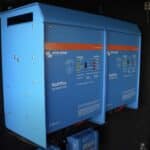
MENUMENU
TALK TO AN EXPERT
Special Hours: 7AM – 6PM PST
TALK TO AN EXPERT
Special Hours: 7AM – 6PM PST
We all use power in our homes, RVs, boats, and more. Whether we’re using an outlet tied to the grid or harnessing the power of the sun through solar panels and batteries, it’s essential to understand the concept of amps. Amps matter because they help us understand the amount of electrical current flowing from point A to point B. Additionally, if you plan on using power off-grid or building out an electrical system, it’s critical to understand amps to design a safe system with appropriately sized wires.
So, let’s dive into what amps are and why they matter!
The word “amp” (A) is short for “ampere,” one of the standard units of measurement used to define electricity. An amp is one unit of constant electrical current. “Amperage” is the strength of that electric current, expressed in amps (or “amperes”).
If you were to think of electricity as water through a hose, amps would be the water. Electrical current is equivalent to the flow rate or amount of water flowing through the hose.

To better understand the significance of amps, let’s have a quick look at volts, ohms, and watts (close relatives of amps) and how they all work together to help us achieve our electrical needs!
Setting up the scene, we’ve established that amps are units of constant electrical current.
A volt (V) is a unit of electrical potential. Voltage is the difference in electrical potential, or the number of electrons, between any two points in an electrical circuit measured in volts.
In the hose analogy, we can think of volts like water pressure. Pressure is the force that moves the water through the hose like voltage pushes electrons through a conductor. Where voltage is the potential for the water to move, amps is the actual flow rate of the water.

Another piece of the electrical equation is “ohms.” Ohms are a measure of resistance, so ohms would be equivalent to the size of the hose.
Using our water-flow analogy, then, we can think of ohms (resistance) in this way: Increasing the resistance (ohms) is like decreasing the size of the water hose, which would, in turn, reduce the water flow (current, measured in amps) that is driven through the hose by the water pressure (voltage).
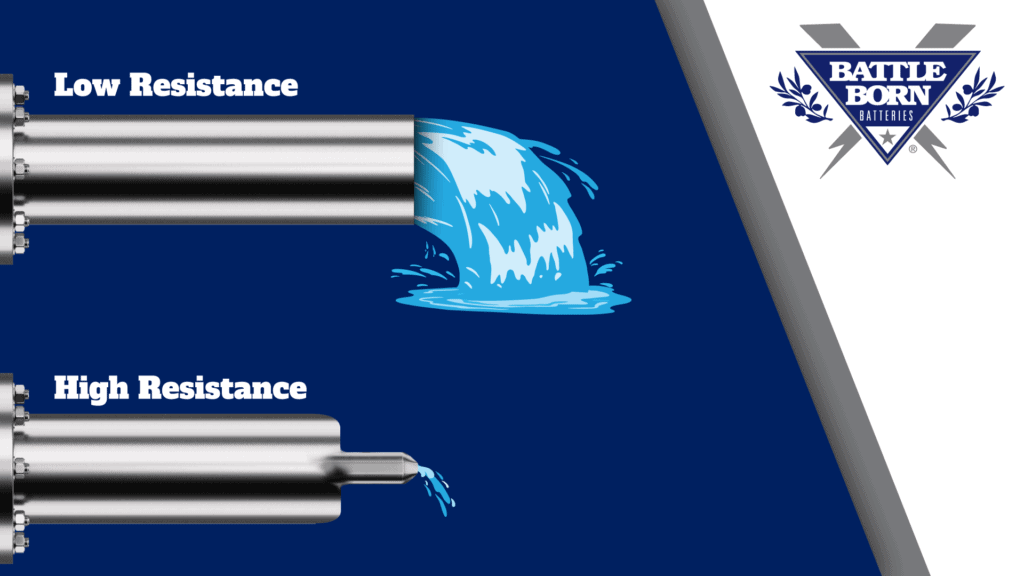
A watt (W) is a measure of power. Specifically, one watt is one joule of energy used per second. Power is the rate at which electrical energy is transferred in a circuit.
So, what is the difference between amps and watts? While amps equal the rate of energy in the circuit and volts equal the potential energy in the circuit, watts are the product of the rate of energy multiplied by the potential of the energy.
With a hose, you can increase the power by either increasing the amount of water coming out or increasing the water’s pressure. In an electrical system, you can increase the power by increasing the current (amperage) or voltage.
To measure amps, we need to use a tool called an “ammeter.”
An ammeter (or ampere meter) measures the electric current in amps. It can measure direct current (DC) or alternating current (AC), but either way, it measures the current in amps (amperes). So, the ammeter is an instrument that measures the flow of current in amps. (You may see ammeters in a circle with the letter “A” inside.)
An ammeter measures the current going through a component. You must connect the ammeter in series to the element to use it. “In series” means one after another.
With an ammeter, you measure current, the electricity going through the meter.
Electricians, engineers, and electrical enthusiasts use ammeters to troubleshoot, design, and build electrical circuits. They can be very helpful in figuring out where and how much current is flowing in individual wires.
Portable digital multimeters are available for troubleshooting and circuit verification. These let you verify that the current is what you expect for a particular circuit. Digital multimeters measure voltage (Volts), currents (Amps), and resistance (Ohms). These multimeters are widely available on the market in various price ranges. You can find clamp-on digital meters or ones with probes, depending on what you wish to measure.
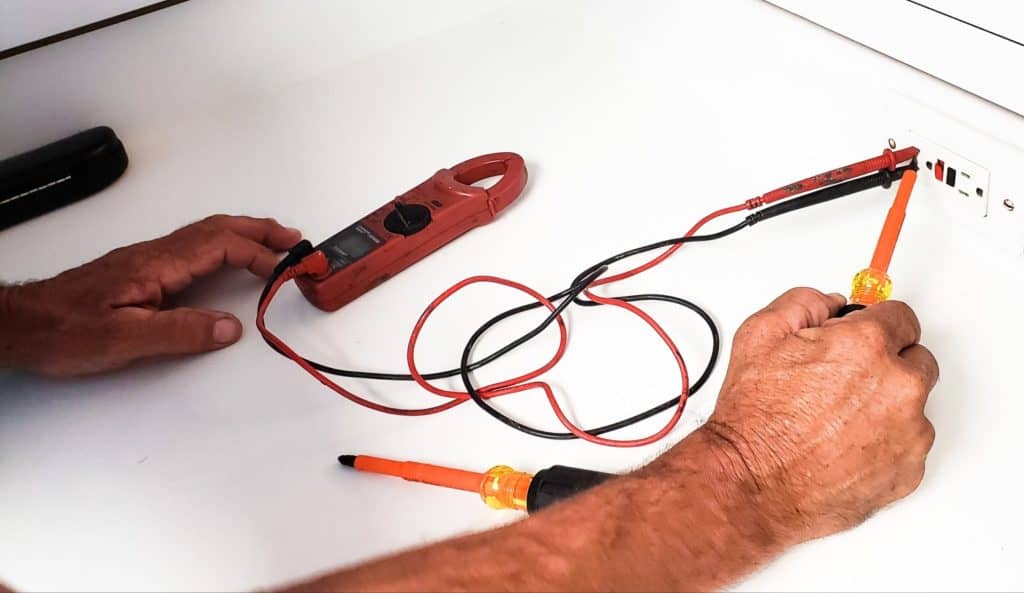
Many mobile power systems use an ammeter to measure the amps into and out of the house battery/batteries over time. You can use this to see how many amp-hours remain in your battery/batteries, to what degree they’re charged, and how long it takes to charge them using various methods. This information is critical for an RVer or boater because batteries supply the power they need for everything in the power system.
There are two primary types of ammeters:
Another way to measure amps is with a hall sensor. These devices do not need to break the wire to be installed and are commonly used in portable amp measuring devices we call amp clamps.
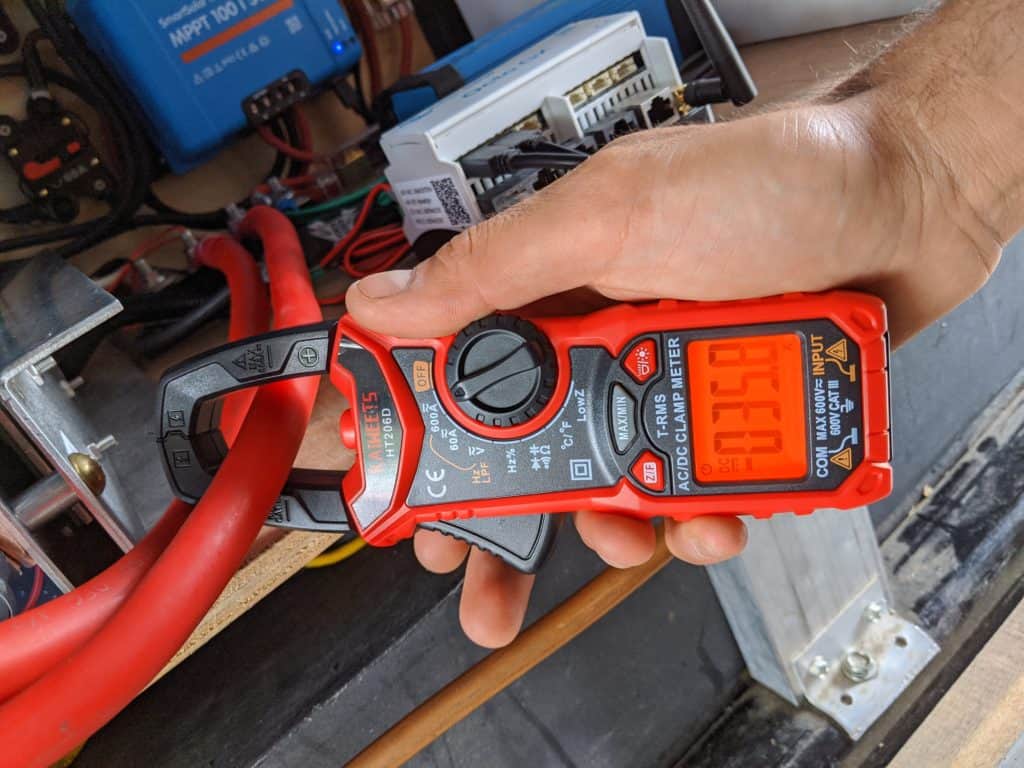
An amp clamp has hinged jaws integrated into a meter to clamp the meter onto a cable, wire, or another component to measure the current in that circuit.
The name Hall sensor comes from the Hall Effect that the sensor uses to determine amperage. “Hall Effect sensors work by measuring the changing voltage when the device is placed in a magnetic field.”
With strong iron jaws that clamp tightly to the conductor, the sensor concentrates the magnetic field around the conductor. As current flows through the conductor, the magnetic field passes through the Hall Effect sensor, producing a voltage that translates to a digital reading that tells you how many amps are running through the system.
An electrical shunt ammeter is commonly used in permanent DC (direct current) electrical installations. These devices are connected in series on the negative side of an electrical circuit, and all the current in the system flows through them. The shunt then reads out the current that it has been seeing.
Shunts like this commonly double as battery meters because they also read the circuit’s voltage. As we learned before (Amps x Volts = Watts), the shunt can also tell how much power (in watts) the electrical system consumes or charges from the batteries.
Permanently installing an ammeter shunt to continually measure the state of charge of your battery or batteries is one way to keep a close eye on the all-important amp hours.
A shunt acts as a low-resistance connection between two points in an electric circuit. Installing a shunt inside an RV gives us a constant display of the state of charge of our battery system.
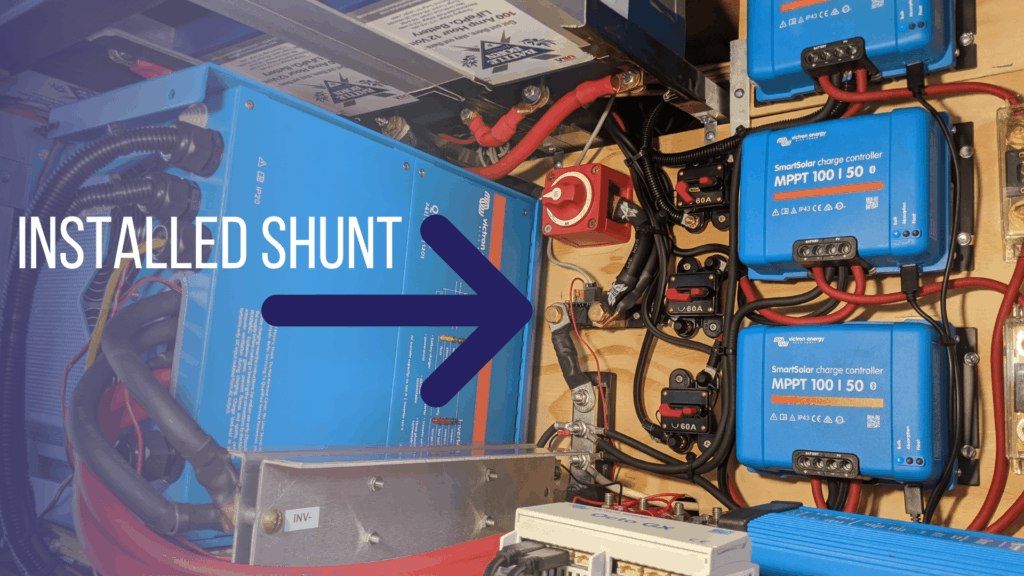

The shunt connects to the RV battery bank on the negative lead and to the display inside the RV. It measures the amps coming into and out of the RV’s batteries. This tells you how much you use and replenish your battery capacity and how much energy remains.
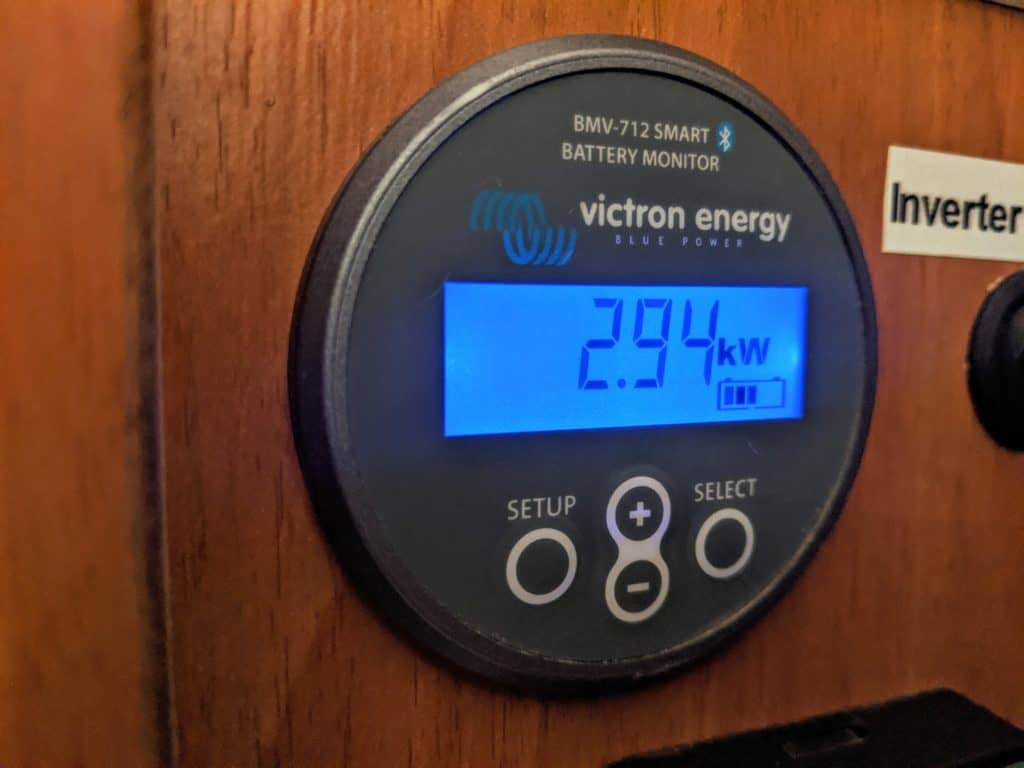
Ampacity is the maximum amount of current that a cable or wire can safely carry.

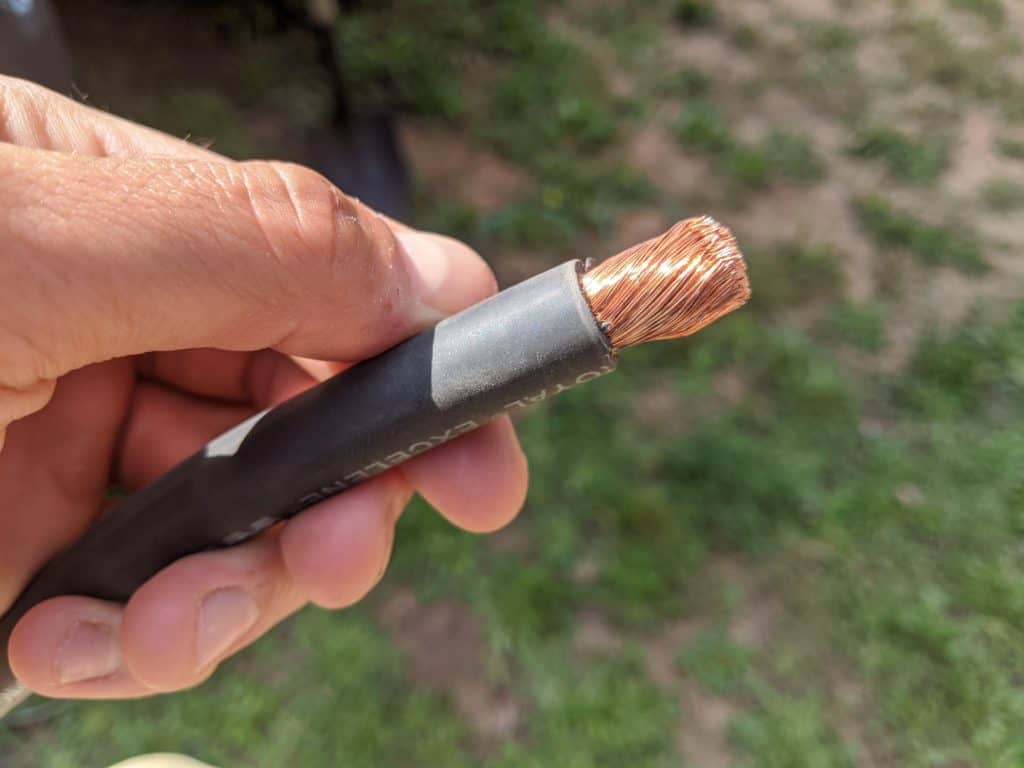
So when you choose wiring or cable for your electrical system, it’s imperative to know that cable’s ampacity rating.
It is relatively common for electrical component companies to mark devices for load size or range in wattage, amps, or volts. You can use this information to calculate ampacity by dividing wattage by voltage.
This vital information is worth repeating: wattage divided by voltage = amps. The ampacity of a device needs to be higher than the amps that will go through it.
Knowing this information and determining wire or cable size accordingly could be critical to your safety in preventing electrical fires, as overloading a wire or device will cause it to get very hot and possibly burn up.
It is key to remember that bigger wires = higher ampacity.
AC (alternating current) and DC (direct current) refer to different types of current flow in a circuit; therefore, they do not have the same amps. DC is an electric charge (current) that only flows in one direction. AC is an electric charge (current) that changes direction several times per second.
Electrical devices are only rated to use one type of current. Do not connect DC devices to AC and vice versa without an inverter or converter charger.
Power receptacles have ratings in amps for mobile applications like RVs and boats, including 50Amp, 30Amp, and 20Amp. These are the maximum amp ratings that these outlets can provide before their breaker pops. Many confuse these amps with battery amps, but they are AC at a higher voltage. (120 or 240V)
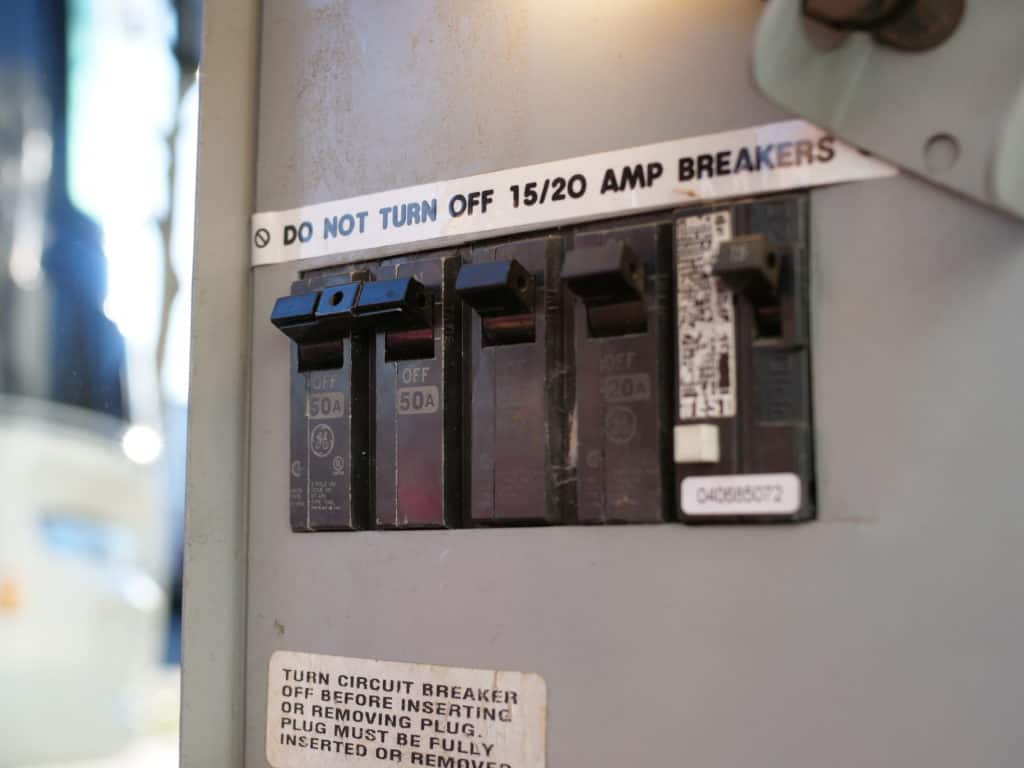
The term “amp-hour” refers to a unit of electric charge. With RV batteries, “amp-hour” describes how much amperage a battery can provide for one hour.
Let’s look at what this means in terms of real-world use:
Theoretically, a battery with a capacity of 1 amp-hour should provide a continuous current of 1 amp to a load (the device or appliance using power) for precisely 1 hour before becoming discharged. The same 1 amp-hour battery could also provide a continuous current of 2 amps to a load for a half-hour. Or it could provide ⅓ of an amp to a load for 3 hours.
When designing an electrical system, it is critical to consider amps to know what size wires you need to ensure the system operates safely.
As you may recall, the higher the amps, the bigger the wires needed to safely serve the system. Wires and cables must be adequately sized to deliver quality power and prevent electrical fires.
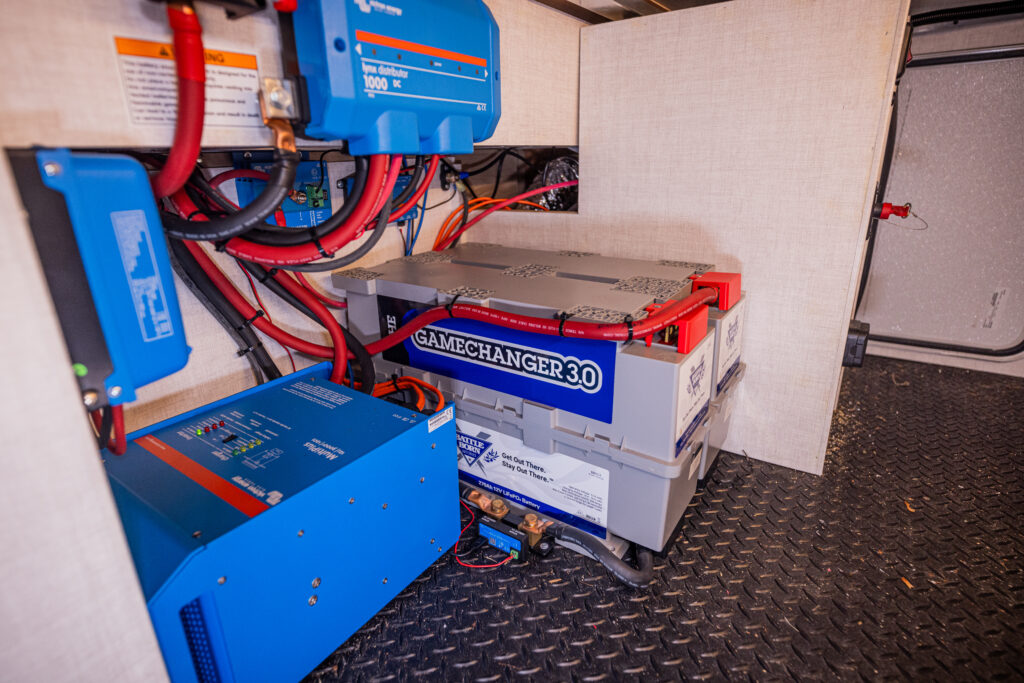
Voltage drop occurs when the voltage at the end of a cable is lower than it is at the beginning of the cable. This drop often occurs at the end of a very long run of cable.
The easiest way to reduce voltage drop is to increase the diameter of the wire (the wire is the conductor). All electrical cables provide some resistance to the circuit flow, but it is essential to take steps to decrease that resistance when designing your electrical system.
Finally, it is best to conserve battery power as often as possible for RV and boat applications. Since systems with higher amps burn more battery power and increase the chance of voltage drop, using the smallest cable acceptable for your application is best.
If your system has larger wires, increasing the voltage will decrease the amperage for the same amount of power:
Additionally, running big, thick, heavy wires long distances adds weight to your rig. These wires can also be very difficult to work with due to their inherent lack of flexibility. So, whenever possible, use the smallest wire acceptable for the specifications of your application and electrical system.
As you can see, amps only represent one part of the electrical equation but are critical to understanding how your electrical system works. It is also essential to understand volts, ohms, and watts to design a proper electrical system because they all work together to become an adequate power supply!
We know that building or upgrading an electrical system can be overwhelming, so we’re here to help. Our Reno, Nevada-based sales and customer service team is standing by at (855) 292-2831 to take your questions!
Also, join us on Facebook, Instagram, and YouTube to learn more about how lithium battery systems can power your lifestyle, see how others have built their systems, and gain the confidence to get out there and stay out there.
Shop Best Sellers

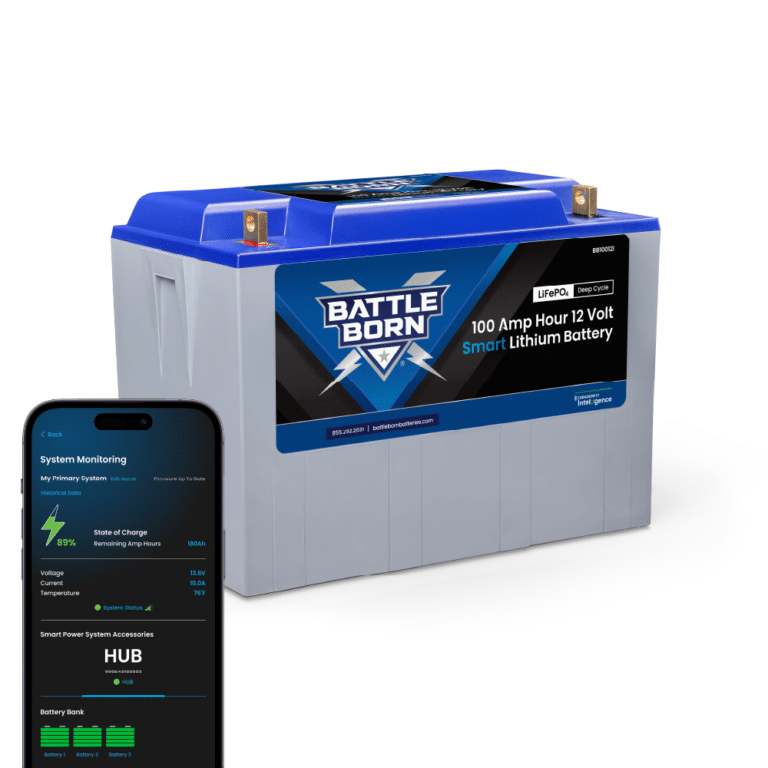
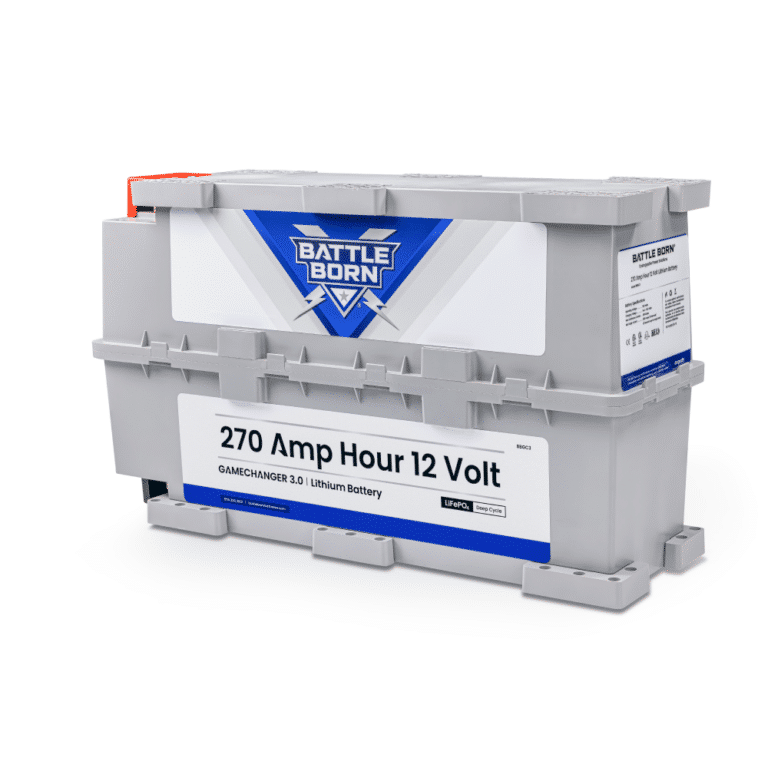
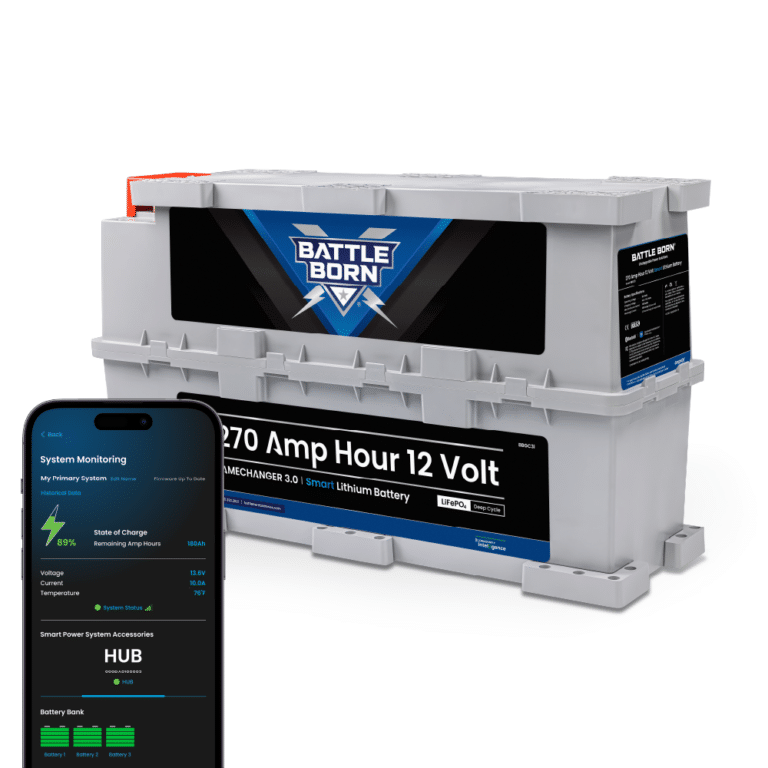
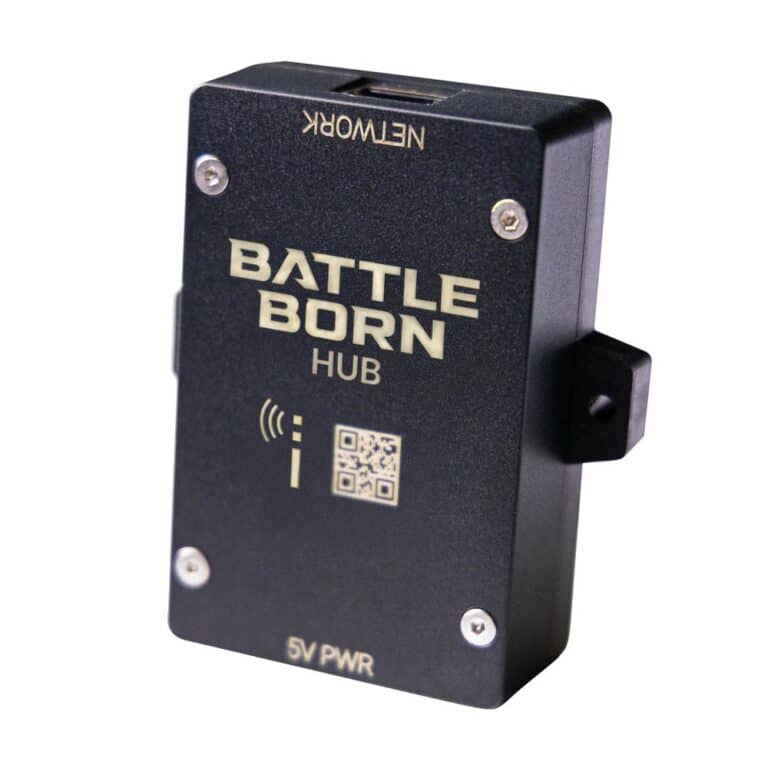
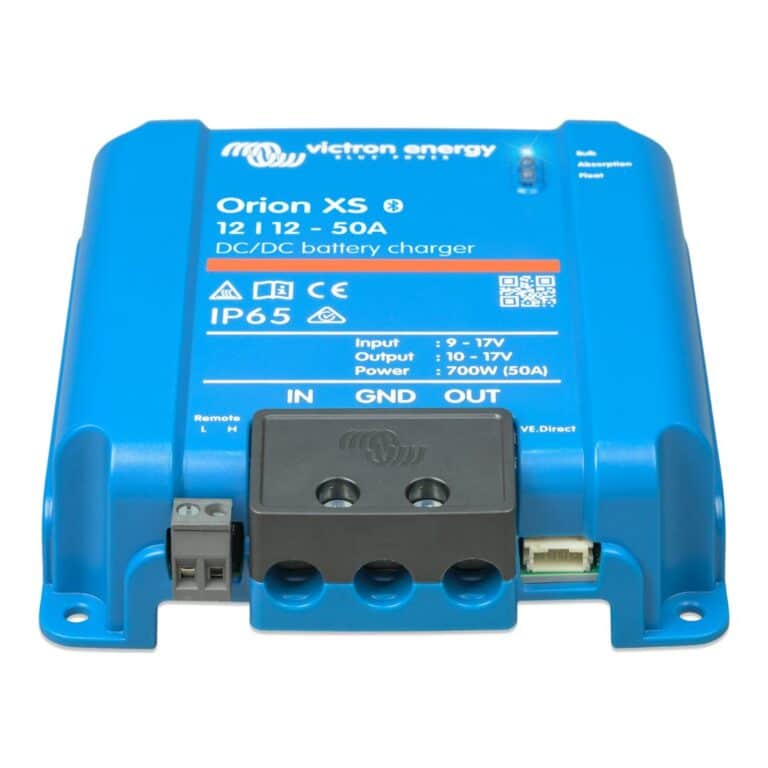
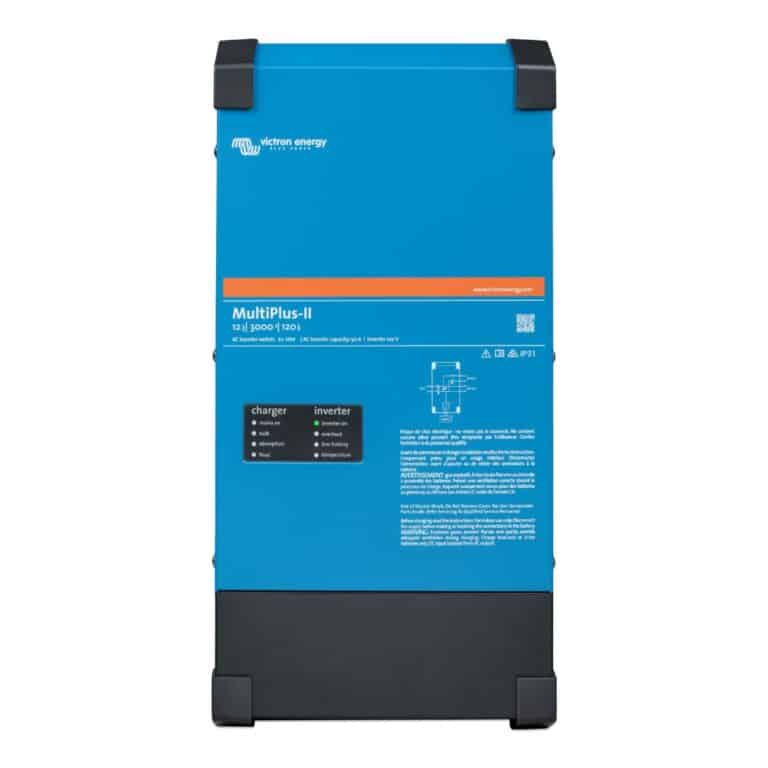

Ask a technical specialist now at 855.292.2831
Stay in the Know
2 thoughts on “What Are Amps And Why Do They Matter?”
I have a 2021 Thor quantum sprinter. I have replaced OEM battery with 3 100 AH battleborn batteries in parallel. My concern is charging by chassis alternator. Alternator specs are 220 amps, I think. Information hard to find. Batteries recharge in about an hour of driving and everything seems fine. I also have 500 watts of solar and 4 kw aux generator. I have 2000 watt inverter in the system. Again everything seems fine. I have not had to run generator for 2 days boondocking at different locations. Do I need to add anything?
Hi Alan, thanks for reaching out. You can give our sales and tech team a call at 855-292-2831 to assist with your system and see if they have any specific recommendations for your rig.